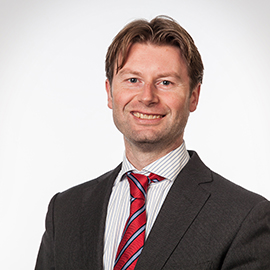Peter Wellens develops method for predicting wave loads in heavy storms
Peter Wellens, expert in the area of hydromechanics of waves at sea and lecturer at the Department of Maritime and Transportation Technology, has developed a method which will shed light on the impact of waves on deck structures on ships during extreme weather conditions.
Lab demo impact of waves
It always looks so intense, the violence of large incoming waves across a ship’s deck during a storm. This so-called ‘green water’ often causes serious damage to ships and their equipment. This will become an even greater problem with autonomous ships in the future. The experienced captain who normally anticipates situations based on weather forecasts and swells will now be onshore instead of on his ship. This means potentially more damage to ships. This is what led Peter Wellens to do more detailed research on the matter in order to find a solution. He’s not the first to do so: for years scientists have been studying the complex green water problem, primarily focusing on the behaviour of water and wave loads on decks. This has not led to a prediction model yet, however.
This method will provide us with the insight that we need to prevent damage to ships and their installations on deck
Measuring the wave impact on deck structure
Wellens’ research ‘Violent free surface wave interaction with ships at moderate forward speed’ is the first of its kind to focus on the statistics of the interaction between waves and structures on the decks of ships. He is studying the transformation of wave data into the distribution of pressure on a deckhouse, for example. ‘This provides us with insight into the pressure distribution on a structural component on deck that you need to make a structural design,’ Wellens says.
Peter Wellens likes to look for solutions to social challenges. Previously he came up with the ‘Wave Parasite’, a floating structure around the monopoles of wind turbines at sea, which converts the motion of waves into energy.

Biography of Peter Wellens
Peter Wellens studied civil engineering in Delft. His thesis project was about wave energy. He conducted his PhD project at Marine Technology, section Ship Hydromechanics, in collaboration with Computational Mechanics at the University of Groningen. The topic of the project was (generating) absorbing boundary conditions for waves in numerical domains. These boundary conditions are essential for ensuring quality in longer simulations with free surface waves and structures. After his PhD project Peter started working at Deltares. He first worked as researcher in the Department of Coastal Structures and Waves. Later, he became head of department of the group working on experimental facilities. Peter rejoined the Delft University of Technology in 2016, as an assistant professor. He teaches about nonlinear wave loads on structures at sea. His research involves modelling extreme wave loads on ships at moderate forward speed. Visit his personal website.
